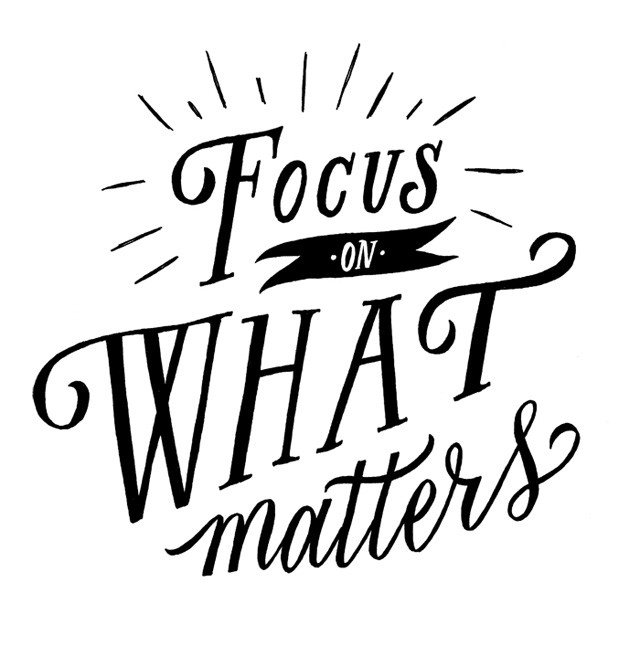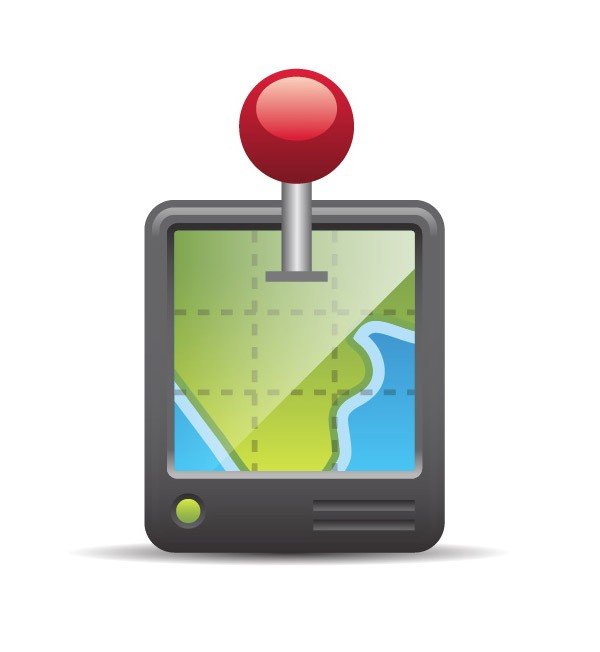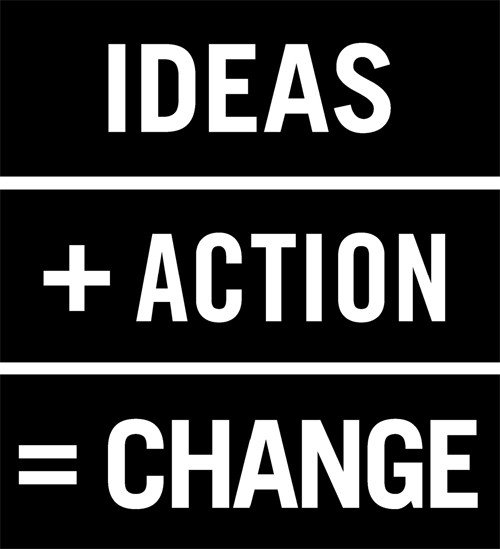
by Julia Felton | Dec 31, 2013
The big question isn’t whether you’re going to make a resolution this New Year—but whether or not you’re going to keep it! Although studies have shown that 75% of people keep their New Year’s resolution through the first week of the year, only 8% of people are actually successful in achieving that resolution.1
Despite this bleak statistic, the truth is that you can achieve the goals you set out to accomplish, if you really want to. Planning the steps to reach your goal and then fully committing to that plan—rather than just thinking about your goal from time to time—can make all the difference. Studies show that people who make resolutions explicitly by stating their goals clearly and with specific detail are 10 times more likely to reach their goals than those who don’t.2
So how can you make sure the goals you set for yourself will actually come to fruition? Here are five powerful ways to achieve the targets you set for yourself this year.
1. Pick One, Concrete “Must-Do” Goal for 2014
“People overestimate what they can do in a year, but underestimate what they can do in a decade.”—Tony Robbins
Setting goals for the coming year is fantastic. Just make sure that you don’t set too many. By giving yourself too many targets to achieve in one year, you’ll end up scattering your energy and you may have trouble following each goal through to completion.
You can avoid this by setting one major, specific goal you want to accomplish during the year.
For example:
- Launch my product by July 1st.
- Publish an eBook by August 15th.
- Start a podcasting series and broadcast once a month.
- Create a blog and post on it twice a week.
In addition to giving your goal some necessary focus, you also want to make sure it’s the right goal. Your goal should be . . .
- A bit of a stretch. You’re going to put a lot of focus into this goal, so challenge yourself. Make sure it’s something you’ll feel really good about achieving. This will help keep you on track if your motivation wanes.
- Reasonable. Does your goal have some wiggle room to accommodate all of life’s emergencies? If not, adjust it a little to be more realistic. Move your launch date back a month to give yourself some breathing room. If you’re debuting a new blog, start out with weekly posts for a few months before dedicating yourself to posting more frequently. Keeping your goals reasonable will keep you from getting derailed early, which often disrupts New Year’s resolutions for good.
- Measurable. If you don’t measure your goal, how will you know when you’ve achieved it—or, more importantly, when to celebrate? Define a concrete finish line and the milestones you’ll hit along the way, and assign dates to each. Consistently rewarding yourself along the way will provide some pleasurable incentives to keep going, even when times get tough.
Once you’ve chosen your goal, write it down and put it in a place where you will see it every day: on your refrigerator, in a frame on your desk, on a note stuck to your computer, wherever. Putting your goal on paper does a couple of things. It will help you state in clear terms exactly what you want. It also makes your goal more “real” by giving it tangible form, which also helps you focus on that goal in spite of any distractions in your life.
Now that you’ve decided on your goal, it’s time to . . .
2. Commit Your Resources to Your Goal
“The difference between a successful person and others is not a lack of strength, not a lack of knowledge, but rather a lack of will.” —Vince Lombardi
If you chose your goal well, recognize that reaching it is going to be a challenge. Life will get in the way, and there will be times when you just won’t feel like working toward your goal. Completing any goal of significant worth is going to require you to remind yourself of why you’re working toward that goal in the first place, and also to continually recommit to it.
This starts by associating yourself to your goal emotionally on a regular basis. Take a few minutes to sit quietly and imagine the emotions you’ll feel when you achieve your goal. Allow them to flood through you. Even though you’re imagining these emotions, you can still get a significant portion of the benefits. The more clearly you can imagine yourself achieving this goal, the more powerful a bond you’ll establish with your goal.3 This bond will help motivate you throughout the project.
Enhance your environment to support your goal. Surround yourself with things that bolster your goal and put you in a mindset to pursue it. Share your goal with people who will back you and be your support system while you work to achieve it.
When you start to lose faith—or feel like playing hooky—recommit to your vision. Remind yourself of why you’re working toward this goal in the first place, and what the outcome will be once you achieve it. Imagine how things will be when you’ve reached your goal.
Now that you’ve got yourself emotionally invested in your outcome, you’ll need to . . .
3. Make Your Goal a Part of Your Schedule
“We are what we repeatedly do. Excellence, then, is not an act, but a habit.” —Aristotle
“Finding time” is a myth. None of the entrepreneurs we know have ever stumbled upon an extra half hour in the day. If you really want to get something done, you need to make time for it.
Schedule a consistent block of time during the week to work on your goal. This could be 9:00-10:00 am every day, or 2:00-4:00 pm, or maybe even 10:00–11:00 pm at night—whatever works for you. Put it in your calendar as an important event, so it’s an unbreakable appointment in your schedule. Don’t allow that time to get co-opted, even by clients. Remember that your work is just as important as everyone else’s.
When life catches up to you—as it often does—and you absolutely have to reschedule, don’t wait to make another date with yourself. Reschedule that missed appointment immediately, just as you would an important meeting.
These unbreakable dates with yourself will add up and become a powerful force that moves you closer and closer to your goal.
Of course, you’ll also want to . . .
4. Give Yourself Permission to Slip Up
“Fall down seven times, get up eight.” —Japanese proverb
There will be some weeks when you’ll take big steps toward your goal, and then there will be times—even months—when you’ll find yourself off track. When the inevitable happens, don’t get mired in beating yourself up about it.
Instead, acknowledge your misstep and focus on what you can do next time that will prevent it from happening again.
Determine what happened that threw you off track. Narrow it down so you know exactly what occurred that caused the misstep, whether it was one isolated event or a series of them.
Figure out what you can do to prevent it from happening again. What action can you take to stay on course?
Recommit to your goal. Remind yourself of why you’re setting out to achieve this goal in the first place. How exactly is it going to benefit you?
Plot your next step. What do you need to do now in order to get back on track and continue toward your target?
Keep in mind that any project is ultimately a work in progress. You are in the midst of achieving your goal, and it will take time to get there. The important thing is that you have committed to a goal in the first place—a huge achievement in itself—and are taking action toward reaching it. You’ve taken that first step forward, and then the next, and then the next. Acknowledge yourself for coming this far and pushing yourself to realize your dreams.
Rather than harping on your errors and missteps along the way, focus instead on the fact that you are working toward accomplishing a goal you’ve set for yourself—which is more than many people can say for themselves.
And, finally, make sure you take time to . . .
5. Celebrate Your Achievements
“Develop an attitude of gratitude, and give thanks for everything that happens to you, knowing that every step forward is a step toward achieving something bigger and better than your current situation.” —Brian Tracy
Sometimes we feel that our hard work goes unnoticed by others, which can be frustrating. Even more concerning, though, is how often we forget to acknowledge our own achievements.
Remind yourself to take a step back, look at what you’ve accomplished, and pat yourself on the back for it. Celebration for hard work is an important part of maintaining a positive attitude about what you do. Consider these points about the value of celebrating:
- A study conducted by Healthstream, Inc. shows that “companies that effectively appreciate employee value enjoy a return on equity and assets more than triple that experienced by firms that don’t.”4
- The U.S. Bureau of Labor Statistics reports that 81% of employees feel that career celebrations help them feel appreciated for their work.5
- In his book The 7 Habits of Highly Effective People, Stephen R. Covey, PhD, writes that next to physical survival, “the greatest need of a human being is psychological survival, to be understood, to be affirmed, to be validated, to be appreciated.”
To ensure that you acknowledge all of the hard work you’re putting in as you go along, try keeping track of your journey. Record the milestones you reach on your way to your goal by jotting them down in a notebook or a Word document on your computer. Sometimes we don’t realize how much we’ve gotten done or that we actually are moving forward and growing.
Then, once a month, take some time to review the progress you’ve made toward achieving your goal. Look at the successes you’ve experienced so far. Whenever you get discouraged, reviewing the milestones you’ve recorded and seeing all of the things you’ve accomplished thus far can really help pump up your spirit and determination.
Reward yourself for achieving your goal, as well as all the mini-goals you reach along the way. Every time you jump to a new stepping stone on the way to your goal, treat yourself in some way—with a nice dinner out, a weekend trip, or a new gadget you’ve been eyeing. When you reach your ultimate goal, be sure to reward yourself with something really special.
And although we’re focusing on the acknowledging yourself for working toward your goal in particular, it’s a good idea to also do this for your progress in other areas of your life!
This year, let’s break the mold together and make our New Year’s resolutions a reality! Follow these 5 steps to achieve whatever goal you set for yourself in 2014. Then, once you’ve finished (and celebrated!), feel free to use this same process to do it all over again. With each goal completed, you’ll move yourself closer and closer to a reality that matches your vision.
References:
1Statistic Brain, “New Years Resolution Statistics,” http://www.statisticbrain.com/new-years-resolution-statistics.
2Ibid.
3The Best Brain Possible, “Get the Picture,” http://www.thebestbrainpossible.com/tag/alan-richardson.
4Forbes, “Make More Money By Making Your Employees Happy,” http://www.forbes.com/sites/stevecooper/2012/07/30/make-more-money-by-making-your-employees-happy.
5O.C. Tanner, “Celebrate Careers,” http://www.octanner.com/institute/white-papers/celebrate-careers%C2%99.

by Julia Felton | Dec 22, 2013
For those not in the know GPS stands for Global Positioning System, and it is what we use in our Sat Nav to help get us from A to B. However at a recent conference I was surprised to learn that you need three co-ordinates in order to establish your GPS. Well this got me thinking. I know the GPS of my home but I wondered what three co-ordinates would inform me of how I was doing in my business.
Then I remembered a very powerful exercise that I often do with my clients during my Jump Start Your Business Days. It’s called positions of empowerment. During the positions of empowerment exercise my clients get to review their situation from three different perspectives. These are:
- From self
- From other
- From observer
It is amazing what happens when you step back from a situation and see things through different eyes. So often we are stuck in the position of self that we forget to see what impact our actions have on others (eg our clients) and also our wider community.
What I realized whilst I was on vacation was that I had been so stuck in my business, in the position of self, that I had failed to use the other perspectives to look at how things were progressing. Now clearly you don’t need to go on vacation to do this but I have to say being unplugged from the office for two weeks really enabled me to see things differently.
OMG, it was so insightful and happened at the perfect time as part of my vacation was based on planning for 2014. Getting out of trenches enabled me to come up with loads of new ideas for the business, things that I could never I envisioned last week. So look for some significant changes happening in the New Year. I really hope you will love them as you have inspired them.
So what new perspective could you take on any situation in your business or life. Look at it through a different lens, from a different perspective, and you will get answers that you had never thought of.
Mastermind groups are powerful groups that can help you to grow your business by enabling you to see challenges from another perspective. Faced with a challenge the other members provide a different viewpoint and help you come up with solutions that you could never had thought of on your own. You see each person has their own frame of reference and experiences which is why they see your challenge in a different way. The other members help you see the other and observer points of view.
So what new perspective could you take on any situation in your business or life. Look at it through a different lens, from a different perspective, and you will get answers that you had never thought of.
by Julia Felton | Oct 30, 2013
Time is the great equalizer. Everybody gets the same amount: 24 hours in a day, 60 minutes in an hour. We can’t save time or accumulate or rearrange it. We can’t turn it off or on. It can’t be replaced.
But these days, it seems as if the lament of not having enough time has become a national anthem. Everywhere people find themselves constantly in a rush, over-booked and over-scheduled with no time off. Life is accompanied by the ongoing stress of not enough time. And sometimes doing too much and being too busy can be a way of numbing feelings or disguising depression or anger.
Though it may not always seem so, how we fill our time and how we spend it is our choice. Answer the following questions to discover if you’re caught up in the “too-busy” cycle.
- I constantly find myself doing “urgent” things and trying to catch up.
- I allow myself to drift into obligations when I don’t know how much time or energy they’ll require.
- I find myself running from when I get up in the morning until I go to bed at night. I’m always tired and never feel like I accomplished enough.
- I seldom schedule a day off for myself and when I do, I tend to fill it with activities.
- I don’t make time for “self-care” activities: physical exercise, nurturing or “pampering” myself, cultural stimulation, spiritual well-being, learning something new, playing, or simply doing nothing.
- I seldom have time to do the things I really love.
- My work and project areas are cluttered with “I’ll look at this later” stacks and “to-do” piles.
- I often miscalculate how long certain activities will take.
- I often miss deadlines or work long hours to meet a deadline.
- I respond to interruptions such as phone calls, faxes, email, beepers and pagers, and allow them to take me off track.
- I try to keep things in my head rather than making lists. If I do make a daily “to-do” list, it’s impossible to complete in a day.
- I tend to move from one urgent thing to the next, rather than working toward specific goals and objectives.
- I find myself constantly wishing I had more time or projecting an imaginary future when I have more time, making comments such as “as soon as…” or “next year…”
- I spend time running errands and rushing because I didn’t plan well enough.
- I spend time doing things I could pay someone else to do.
- I often do things because I “should,” or continue to do things that no longer fit who I am.
- Other people complain that my schedule doesn’t allow enough time for them.
If you’re stuck in the too busy cycle why not schedule a complimentary 30 minute coaching session with me to explore where your business is not Joined Up and is draining you of time, money and energy.
by Julia Felton | Oct 23, 2013
It’s no surprise that step five of the CANTER model to create a Joined Up Business is Execute The Plan and follow up is an integral part of this. It does not matter whether you’re learning to swing a golf club, baseball bat or tennis racquet, coaches always emphasize the importance of follow-through. It’s not just hitting the ball that matters, it’s how you continue your swing once contact is made.
The same thing applies in job interviews, networking, sales and almost any work situation: without purposeful follow-through on your actions and interactions with others, you won’t really be able to reach your professional potential.
“Failure to meet deadlines, honour commitments, monitor staff, return calls and keep track of long-term projects is the most underrated cause of chaos and failure in business life,” writes Stephanie Winston in Organized for Success.
So often we feel we’ve completed a task because the action of it is “done,” but we under-emphasize how powerful it is to continue developing, tracking and monitoring operations and relationships even after they’ve been set in place. As Larry Bossidy and Ram Charan note in Execution: The Discipline of Getting Things Done, “Follow-through is the cornerstone of execution, and every leader who’s good at executing follows through religiously. Following through ensures that people are doing the things they committed to do, according to the agreed timetable.”
It’s Not Just What, But How
When we think of follow-through, we tend to think of taking action. But a large part of follow-through is about first figuring out how things will be done. Once you define your goals, set aside some time to decide just how you will reach them. What steps will be needed to accomplish them? Who will do which steps and when? What is the desired time-line? If a strategy does not address the hows, it is almost certainly doomed to failure.
Take meetings, for instance. A plan for follow-through should be detailed at the end of every meeting. “Never finish a meeting without clarifying what the follow through will be, who will do it, what resources they will use, and how and when the next review will take place and with whom,” Bossidy and Charan suggest.
Organizing and Delegating
A good organizational system will support follow-through more than almost anything. If you are among the organizationally challenged, do one of two things:
1. Make a vow, buy an organization book or two, reserve a weekend or a week, and just do it. Get organized once and for all. You’re not likely to follow through well, if at all, when the disorganization gremlin has hold of you. Getting organized is one of the biggest keys to success; not doing so is an extremely common and most unfortunate form of self-sabotage.
2. Hire someone to organize you and keep you that way. The investment will pay for itself when you begin following through more consistently.
Delegating should also be part of an organizational system. “Getting things done through others is a fundamental leadership skill,” according to Bossidy and Charan. “Indeed, if you can’t do it, you’re not leading.” Delegating is an efficient way to ensure that the greatest number of tasks, including follow-up tasks, get done in the shortest amount of time. In other words, if you want to be successful, don’t be afraid to dole out the workload to others. The key is to always think in terms of the big picture instead of focusing only on whatever task is in front of your face at the moment.
Pro-activity and Integrity
Following through means taking action and keeping your word. Below are some additional considerations regarding follow-through.
• When you say you’ll do something, be scrupulous in meeting your commitment, whether to a client, supervisor, customer or direct-report. If you can’t deliver it, don’t promise it.
• In job interviews and networking, rapid follow-up can mean the difference between landing the job and/or client. Hiring decisions are often made very quickly after interviews. And getting in contact with people soon after meeting them means they will remember you, increasing the likelihood they will eventually buy from you.
• Be sure to send a thank you note after you close a sale or receive any courtesy. This will make you stand out from the others, inviting an ongoing relationship to develop, or continue to develop. Also, a short thank-you note gives you a great excuse to add anything you forgot to say in a meeting or interview, or to highlight details you only glossed over.
• All top salespeople are masters at follow-through. Lack of follow-through is the primary element missing when sales are not keeping pace with leads generated. You may have hundreds of leads with a great deal of potential. But unless you follow through and actively market/sell to these leads, they will not turn into sales.
• Following through after sales have been made also makes good financial sense. Getting business from new customers costs significantly more than securing additional business from existing customers.
When it comes to follow-through, something is better than nothing. It doesn’t have to be an all-or-nothing thing. The best is to follow-up as frequently and best as you can, a practice that can even affect productivity positively.
“On a day-to-day basis, consistent, automatic follow-through can deflect a lot of the firefighting that can push your day off course,” Winston writes
I’d love to hear where you are failing to follow through in your business and the impact that this is having on your success. Recently I estimated that my lack of follow through was leaving c£30,000 on the table each year. Ouch!!! Now maybe that will prompt me into action.

by Julia Felton | Sep 17, 2013
With our constant stream of emails, voicemails, meetings, conference calls, pages, faxes and so on, it is a minor miracle that any of us can accomplish anything. With our Blackberrys surgically implanted into our hands, our time is sliced so thinly that we never have the focused time to develop the big-picture perspective required for an action plan, let alone the time to execute it.
“Daily routines, superficial behaviours, poorly prioritized or unfocused tasks leech managers’ capacities—making unproductive busyness perhaps the most critical behavioural problem” in business today, contend Heike Bruch and Sumantra Ghoshal in their book A Bias for Action.
For so many of us—whether CEOs for major corporations, small business owners or solo-entrepreneurs—there is a fundamental disconnection between knowing what should be done and actually doing it. Calling this disconnection the “knowing-doing gap,” Stanford University researchers Jeffrey Pfeffer and Robert Sutton pose the question: “Why does knowledge of what needs to be done frequently fail to result in action or behavior consistent with that knowledge?”
Is there anyone in business today who hasn’t wondered the same thing?
The answer, argue Bruch and Ghoshal, is both simple and profound. They sum it up with the term “willpower.” The problem they say is not that managers’ time is sliced, but that their intention or “volition” is sliced as well.
Getting things done requires two critical components: energy and focus. And both are at risk in the modern workplace. Building a bias for action in yourself and your organization requires developing and reinforcing the skills to become a “purposeful” or “volitional” manager. These are people who can consistently achieve their objectives by making an unconditional commitment to their goals and then leveraging the power of that intention to overcome the obstacles in their way, whether their own doubts or the bureaucracies within their organizations.
“Purposeful action-taking depends on engaging the power of the will,” according to Burch and Ghoshal. “Not only does willpower galvanize your mental and emotional energy, it also enables you to make your intention happen against the most powerful odds: distractions, temptations to move in a different direction, self-doubt, and negativity. Willpower is the force that strengthens your energy and sharpens your focus throughout the action-taking process.”
Burch and Ghoshal identify four key steps that form the basis of successfully taking action:
Form your intention. To work, your goal must appeal to you emotionally and be something you can define concretely enough so you can clearly visualize its success.
Commit unconditionally to your intention. This is the key step, which the authors liken to “crossing the Rubicon,” Caesar’s irreversible decision that led to his conquest of Rome.
Protect your intention. Once you have made your commitment, you have to protect it from forces both within yourself and your organization.
Disengage from your intention. Unlike Caesar, your Rubicons aren’t life-and-death affairs. You have to define your “stopping rules,” the point of success—or failure—from which you walk away and take up the next challenge.
From the commitment comes both the emotional energy and the focus that are critical to your success. In short, the process of getting things done in business is pretty much the same as in any other aspect of life: The only things that get done are those that you genuinely believe in, and believe will get done.

by Julia Felton | Aug 15, 2013
The term Bodacious comes from a blend of the words bold and audicious and to me is such a great word to describe boundaries. So what is a boundary and why do we need bodacious boundaries in business?
Well a boundary defines a limit. Something that we will permit or not into our lives. A personal boundary defines who you are as an individual and therefore the types of opportunities that you allow into your life. There are a lot of different aspects of ourselves regarding boundaries and these include:
- physical boundaries
- mental boundaries
- psychological boundaries
- spiritual boundaries
How we set boundaries and how consistent we are with them can be a defining point in how successful we are in our lives and our businesses. Sometimes setting boundaries involves you being courageous, particularly if it is with someone you have had poor boundaries with in the past. However, the defining thing about boundaries is that they bring clarity. Everyone knows the rules of the game and armed with this knowledge everyone feels safer.
It’s ironic to me that setting boundaries actually increases our security and safety and yet so many of us fail to set boundaries because we think that people won’t like us. In fact the opposite is true, people with bodacious boundaries have massive respect from others whilst people with poor boundaries can be walked over by others. I should know I’ve experienced this many times in the past!.
In my business I have found it is essential to implement bodacious boundaries so that I always have clarity and focus about what I am doing when. Time is our most precious resource and yet as business owners we can easily succumb to the thief of time and get distracted with non-incoming producing activities. I’ve found that by putting in bodacious boundaries I have become more productive and effective.
Here are my 15 top ways to help you instill bodacious boundaries in your business. Implement just a few of these and what your business soar to success:
- Turn off email notifications
- Turn off the ringer on your mobile phone
- Don’t answer email throughout the day, instead batch it and answer just twice daily
- Don’t get distracted with social media. Select a certain time each day to engage and then switch off
- Set a timer and work in 60-90 minute increments
- Never skip 30 minutes a day of daily marketing, no matter what
- Pre-schedule this 30 minute daily marketing activity in your calendar for the next month (aim for the same time each day)
- Know in advance what you are going to focus on – it avoids procrastination – a serious time waster
- Don’t multi-task
- Focus on completion, not perfection
- Put a physical and energetic “do not disturb” sign up during your marketing time
- Do the tasks you fear the most, first
- For 30 minutes each day, treat your business as the most important thing in your life
- Set shockingly short time frames for each task – it focuses the mind
- Remember it is only 30 minutes.
Look at this list and identify three bodacious boundaries you are going to set today. Share them on the facebook page and let us help keep you accountable to doing them.
During the Master Your Money Mindset workshop I will be sharing with you my top tips, strategies and techniques to help you create Bodacious Boundaries with money. Registerhere to join us.

by Julia Felton | Feb 4, 2013
There are many types of leaders in any organisation and often the best leader is the one best suited for the job at hand. Now you know all about the eight different Talent Dynamics profiles you can then chose the leader suited for that job.
 Creators
Creators
Don’t expect a Creator to be the best people-person or a data-driven analyst. Creators lead best by setting the vision, a high standard to reach for and being task focused to reach their goals. To be in flow and avoid inevitable friction, a Creator needs a strong communicator to lead the team and a strong analyst to manage the numbers, or both the
people and the profit will suffer.
 Stars
Stars
Don’t expect a Star to wait for their team, or delight in the details (unless it is details on presentation and people). Stars strive for high standards and will often switch things at last moment to suit the occasion. Their leadership is by inspiration and leading from the front, so they need a strong Deal Maker to secure the connections and a strong number cruncher to count the dollars.
 Supporters
Supporters
Despite being one step away from the Star profile, the two are as different as thunder and lightning. Supporter profiles engender plenty of loyalty wherever they go, one of the Star profile’s greatest challenges. This is because while Stars generate hands-off admiration, Supporters attract hands-on motivation. Supporters are both intuitive and sensory which means that they can often act as the antenna for a more removed profile, leading by being the implementer from vision to action, through people.
 Deal Makers
Deal Makers
Deal Makers are ‘people people’ but they are more private than a Star and prefer to work one-to-one. Don’t expect Deal Makers to stick to a plan and expect them to come back from a meeting with a very different outcome than expected but a much better one. Deal Makers lead best when they are able to be in constant conversation with their ear to the ground, not isolated from the crowd or stuck in the back office.
 Traders
Traders
Traders struggle when given a blank sheet to fill but will quickly find the patterns in a puzzle. They find their flow when they grow a connection with their market and with their team. When they are taken out of this connection, it takes them time to tune back in and find their rhythm again. Traders lead far better through daily activity than long-term milestones and where they have ongoing input to inform their decision-making. All great Trader leaders lead from the middle of the action, which is the opposite of Creators, who do their best work when above the noise of the markets.
 Accumulators
Accumulators
Their analytical skills and sense of timing make Accumulators excellent project managers who will find the way to deliver what is needed on time. This ability to be extremely reliable has led many Accumulators up the ranks in areas that are not their passion. Many end up being faced with office politics, which they have little interest in and are ill equipped to handle. Accumulators lead best when they have the power to choose their team, as they will ensure that they only choose those reliable enough to get the job done.
 Lords
Lords
Lords are great at finding inefficiencies because they analyse the detail and stay in fanatical control. While this works for hard assets, it doesn’t work so well with people. For this reason, Lords are best at leading through the numbers instead of through conversation and collaboration. Lords almost always value process and policy over people, so take care in their position within a team and set them up for success using their strengths.
 Mechanics
Mechanics
Mechanics like to take things apart and put them together again. They are up to the challenge of changing the wheels on a moving car and as a result they are continually challenging the status quo on the way things are done. This can be very stimulating for some and very frustrating for others. Mechanics lead best by staying out of the fray and seeking ways to perfect a process or system and then have a team implement with thorough training.
Discover your leadership style by taking your Talent Dynamics Profile Test

by Julia Felton | Nov 21, 2012
“The greatest source of unhappiness comes from inside.” —Jim Rohn
If you want to be a leader who attracts quality people, the key is to become a person of quality yourself. Leadership is the ability to attract someone to the gifts, skills, and opportunities you offer as an owner, as a manager, as a parent. I call leadership the great challenge of life.
What’s important in leadership is refining your skills. All great leaders keep working on themselves until they become effective. Here are some specifics:
Learn to be strong but not rude. It is an extra step you must take to become a powerful, capable leader with a wide range of reach. Some people mistake rudeness for strength. It’s not even a good substitute.
Learn to be kind but not weak. We must not mistake kindness for weakness. Kindness isn’t weak. Kindness is a certain type of strength. We must be kind enough to tell somebody the truth. We must be kind enough and considerate enough to lay it on the line. We must be kind enough to tell it like it is and not deal in delusion.
Learn to be bold but not a bully. It takes boldness to win the day. To build your influence, you’ve got to walk in front of your group. You’ve got to be willing to take the first arrow, tackle the first problem, discover the first sign of trouble.
You’ve got to learn to be humble, but not timid. You can’t get to the high life by being timid. Some people mistake timidity for humility. Humility is almost a God-like word. A sense of awe. A sense of wonder. An awareness of the human soul and spirit. An understanding that there is something unique about the human drama versus the rest of life. Humility is a grasp of the distance between us and the stars, yet having the feeling that we’re part of the stars. So humility is a virtue; but timidity is a disease. Timidity is an affliction. It can be cured, but it is a problem.
Be proud but not arrogant. It takes pride to win the day. It takes pride to build your ambition. It takes pride in community. It takes pride in cause, in accomplishment. But the key to becoming a good leader is being proud without being arrogant. In fact I believe the worst kind of arrogance is arrogance from ignorance. It’s when you don’t know that you don’t know. Now that kind of arrogance is intolerable. If someone is smart and arrogant, we can tolerate that. But if someone is ignorant and arrogant, that’s just too much to take.
Develop humor without folly. That’s important for a leader. In leadership, we learn that it’s okay to be witty, but not silly. It’s okay to be fun, but not foolish.
Lastly, deal in realities. Deal in truth. Save yourself the agony. Just accept life like it is. Life is unique. Some people call it tragic, but I’d like to think it’s unique. The whole drama of life is unique. It’s fascinating. And I’ve found that the skills that work well for one leader may not work at all for another. But the fundamental skills of leadership can be adapted to work well for just about everyone: at work, in the community, and at home.
Article by Jim Rohn

by Julia Felton | Nov 13, 2012
One in 20 bosses. That’s only 5%.According to this research cited in Management Today, for every company that has 20 bosses (your average 200-300 employee firm), only one of them is likely to be a good boss. For a public sector body with say 5000 employees, it may have 25 good bosses. Puts things into perspective wouldn’t you say?
How on earth does this happen in today’s world when it would be easy to think that businesses understand the value of developing their people? It’s not like there aren’t any books on the subject or even free information out there on the good ol’ web…
I’ve pulled together these critical danger points for you to look at for yourself and/or to work through with the leaders and managers in your organisation. They come from my personal experience and learning so I’m not saying this is all there is to it, please add your own insights too in the comments:
Critical Danger Points
Not understanding that different people need different approaches so they treat all people the same.
This can come from a genuine wish to do well by others, so many of us learned “Do unto others as you would have them do unto you”. Treating people with kindness and compassion makes you a good person. Giving all your direct reports public praise and recognition may not make you a good manager though – some will love it and others may be mortified. The same applies to how much time you spend handholding and ‘helping’ your team. Some may really appreciate help, others will just feel micro-managed and that you don’t trust them.
Not ensuring people work to their strengths and talents.
The evidence is overwhelming on this point. When managers and their teams really get how to leverage their talents across the team (and between them and other teams in the organisation) not only does productivity and effectiveness go up, motivation and engagement usually increases too.
Underestimating the importance of good people management the higher up the ladder they go.
I’ve heard several HR people talk as though senior leaders don’t need to focus so much on their people management skills because their direct reports are also more senior and should know what they’re doing. Maybe so, however, there are some other factors to consider. Their direct reports are people too and they have the same emotional needs as any person does. Remember “All the world’s a stage” and people are watching how senior managers manage to get clues about what is really valued by the big bosses, no matter what leaders say. So maybe it’s more important the higher up they go as they get to influence a greater sphere of people. After all, people do as you do, not as you say..
They lack self-awareness
As cited in the Management Today article self-awareness is very important. Imagine a leader talking at a staff conference about people coming forward with ideas and interacting when they had shouted at people only a few minutes earlier? Leaders and mangers may believe that their past successes were all down to them and discount the contribution of others. Nothing rankles so much with people as when blame and credit are unfairly attributed. There may be times when us development and HR peeps have to bite the bullet and help leaders to understand the impact of their behaviour – get your CV ready and tread carefully though, not all leaders will want to hear it because…
They simply don’t care and purposely choose a domineering or bullying stance
because they believe that’s what gets results. It will definitely get results; the ones where people do a lot of politicking to stay on their right side. The kind of results where people won’t pass on valuable data for decision-making because it conflicts with what they know or think the leader wants to hear. This not caring often results in the best people leaving the business at the first opportunity because they’re not allowed to do their best work. The research cited in the article found that 47% of respondents felt threatened at work, instead of praised… The end result of all this is usually a downward spiral for the organisation.
They don’t manage change very well.
Any research on change will indicate that participation and communication are the two most important elements of successful change. Yet time and time again bosses don’t do either very well. All too often in my experience decisions are made without genuine interaction with others in the organisation. Often those making the decisions on changes don’t know what really goes on in the level of detail that team members do. Give people a chance to input BEFORE decisions are made. Not all change will be good for each individual in the business but for those that it is make sure to communicate that as well as why the change is so vital in the first place. Then communicate that again and again and again and again until people complain that they’ve heard this message several times now!
The business hasn’t got the right leader in the right place at the right time.
In the way that team members will get to perform at their best when they get to work to their strengths, the same applies to leaders and managers too. Yet more than this, each leader will have a time and place in the organisation that is most suited to their talents. When a leader is great at innovating and problem solving, don’t put them in charge of customer service because they are likely to innovate their way out of service issues. This is especially true when the business (or product) is at the point where it is building a solid customer base. In the same way, a leader who is great at managing risk is not going to excel if the organisation really needs to boost the performance of its staff. In addition, the economy goes through cycles (or seasons) too and this also influences who is best to lead at a particular point in time. You don’t want the person who was so good at tightening your belts to restrict growth when the economy turns from Winter to Spring.

by Julia Felton | Oct 28, 2012
‘Before you are a leader success is all about growing yourself.
When you become a leader, success is all about growing others.’ Jack Welch
A recent survey conducted by Emergentics International revealed that Leadership development is the number one priority of HR and organizational development leaders, with 25% of respondents putting it at the top of their priority list. With organizations needing to meet ever-higher financial goals and growth targets, the emphasis on people development provides a window into the way companies are seeing their ability to rise to the top.
The emphasis on talent development and management over competencies like innovation and tactical elements like metrics points to a realization that positive advancements in organizations must start with people. The second highest response for organizational priority was employee engagement, at 22%.
So what is leadership? The Oxford Paperback Dictionary defines a leader as ‘one whose example is followed’. Leadership is that elusive quality that companies are looking for and yet, in my opinion, is so often lacking in organisations. Given the multitude of companies offering leadership training and the circa £3billion spent on external training annually in the UK, how come our companies are not some of the best performing in the world? To my mind, leadership and management are too often confused. We expect managers to lead and yet leadership and management involve completely different skill sets. Indeed, the Peter Principal invariably plays out in organisations. The Peter Principal states that ‘people are promoted to the level of their incompetency’. This is why all too often people get promoted only to fail in their managerial role because what they really need are leadership skills.
Complete leadership starts with the vision and builds relationships with the people that share the vision and who will take on the task of achieving the vision. This differs from management which uses structures, rules and processes in order to control and predict results in a more stable situation. Frank S. Greene notes that ‘the success of management is seen in the industrial empires where people can be used interchangeably and as replaceable parts.’
In order for any business to be successful it needs strong leaders and particularly so in this age of globalisation because whilst an individual might be able to mask their lack of leadership skills in a small organisation, in my experience once they have to manage across multiple locations they will be found out. Great leadership involves developing a blend of vision, relationships and execution and as an organisation expands, the need for the leader to communicate that shared vision to a diverse set of people becomes paramount because unless the vision is shared, the organisation will never meet its goals. It will become like a ship bobbing up and down on the ocean with no clear direction of where it is heading and wonder why the business fails to move forwards.
So how can Horse Assisted Coaching help people develop leadership skills? The answer lies in the fact that horses are always looking for a leader. As a prey animal, the horse always has to be aware of imminent danger or else he could end up as someone else’s lunch. This means that a horse always has to be alert to any danger in his surroundings and also be in a position to run away should that danger present itself. To ensure that the horse can survive being a prey animal it has evolved so that its natural behaviour and physiology can keep it as protected as possible. This is why horses have eyes on the side of their head, as it gives them nearly 360 degree vision to see any approaching danger. They are also acutely aware of any changes in their environment, as this could herald the onset of approaching danger. The sense of community and camaraderie they gain from living in herds also helps keep horses safe. I’m sure you’ve heard of the idiom ‘Safety in numbers’ – well, this is the premise that horses work from. The more of them that are together, the more eyes they have looking out for danger and so the safer they feel.
It is because of this desire to stay safe that a horse is always looking for a leader. Can you imagine living by yourself, never being able to rest and relax for fear of being attacked and eaten? This is a tiring place to be and the reason why a horse is willing to let us take up the leadership role with them. However, and this is a really big thing, we must prove to be a leader who can be trusted and who knows what they are doing. If we have no clarity or certainty and don’t evoke a sense of trust from the horse then he will not let us lead him and he will take over the leadership position. You see, unlike people who might be quite polite when their boss is not being a clear, decisive leader, a horse has no option but to act, his life depends on it, whereas in a business we continue to tolerate poor leadership until such time that the leader is removed from that position – ironically often promoted to another position.
Different from humans, horses don’t follow blindly, yet they are looking to be led. They cannot be coerced or influenced, they choose to follow. Horses have survived for thousands of years due to their ability to get along with, and depend upon, one another. They test each other to establish their position within the herd, deferring only to other horses they feel will keep them safe. In a world in which money, control and status are non-existent, horse leaders respond immediately to the thoughts, feelings and sometimes hidden agendas of those around them, and communicate with authority, purpose, authenticity and confidence – all without ‘saying’ a single word. Like some employees, horses can either be willing participants or resentful ‘herd members’, making them ideal partners for teaching self-leadership and teamwork.
Want to learn more about how horses can help you make systemic leadership changes in your organisation, then check out AHA! Programmes at www.unbridledsuccess.co.uk




















